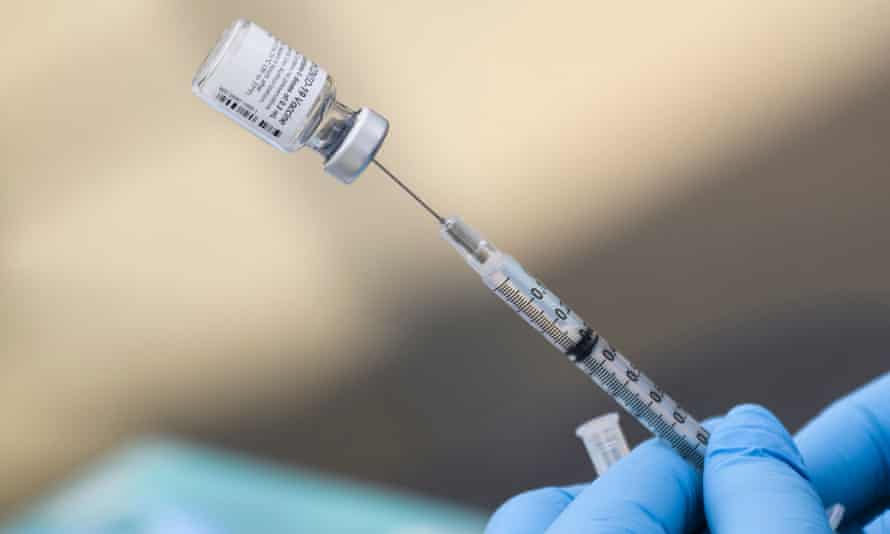Business Insider
‘The Day After Tomorrow’ film foretold a real and troubling trend: The Atlantic ocean’s circulation system is weakening

- In the movie “The Day After Tomorrow,” an ice age happens after currents in the Atlantic suddenly stop.
- The Atlantic’s current system is responsible for Europe’s warm climate, but it may be weakening.
- Slower circulation may bring droughts to west Africa and colder weather to Europe and North America.
In the 2004 film “The Day After Tomorrow,” a climatologist played by Dennis Quaid warns world leaders about a rapid climate shift.
The key factor is an ocean current system called the Atlantic Meridional Overturning Circulation (AMOC), which moves warm water from the equatorial tropics up to Europe and the north Atlantic. This influx of warmer water contributes to western Europe’s mild, temperate climate.
In the movie, the AMOC stops completely, causing an ice age to begin almost overnight. While the speed and intensity of that cold snap are hyperbolized in the film, the AMOC is very real, and research suggests a slow down of its circulation is a likely consequence of climate change.
In a paper published last week, climate scientist Niklas Boers concluded that the AMOC is approaching a tipping point. If enough fresh water from melting polar ice enters the ocean, the current system will experience an “abrupt weakening,” and destabilize, he told Insider.
A new climate report from the UN’s Intergovernmental Panel on Climate Change (IPCC) similarly suggests that the AMOC will very likely weaken by the end of the century.
According to Boers, a researcher at the Potsdam Institute for Climate Impact Research in Germany, this weakening would cause temperatures in Europe to fall, and “the cooling effect would be stronger the further north you go.”
On the US East Coast, meanwhile, sea levels would rise. Parts of central and west Africa would experience persistent drought conditions, since those areas also benefit from the AMOC’s circulation.
An on/off switch for the Atlantic’s currents

When the AMOC is flowing quickly, western Europe enjoys a wet and warm climate. Scientists have likened the system to a conveyor belt: Once warmer water reaches the area around the UK, it cools and sinks to the bottom of the Labrador and Nordic Seas. Then that cold water makes a U-turn and snakes along the ocean floor, down to Antarctica’s Southern Ocean.
But if this circulation is sluggish and weak, warm tropical waters don’t get moved up, and the north Atlantic cools.
The AMOC’s speed is determined by a delicate balance of salt and fresh water. Salty water is dense, so it sinks easily. But as Greenland’s ice sheet and glaciers continue to melt, more fresh water is joining the AMOC’s salty surface water, making it lighter and less likely to sink. That clogs up the circulation’s flow.
Prior research suggests that a change in the strength of water circulation in the Atlantic really does precede abrupt climate changes. By examining ice cores dated to Earth’s last ice age, scientists have found that the AMOC alternates between two states – a strong “on” state, where the current system runs quickly, and a weak “off” state where that circulation decelerates.
“A shutdown of the AMOC is the easiest, most efficient way to disrupt the climate system,” Francesco Muschitiello, a geographer specializing in paleoclimatology at the University of Cambridge told Insider, adding, “95% of time when we talk about rapid climate change, it’s associated with AMOC.”
Still, Boers said, any cooling related to the AMOC wouldn’t look like “The Day After Tomorrow” – it “would take a few decades,” and North America “won’t get as cold as the movie suggests.”
It would take at least a few hundred years for the AMOC to re-strengthen

In the past, when the AMOC reached a tipping point, the transition from strong to weak took a couple of decades, Boers said. But it takes much longer for the system to switch back.
“It typically took a few hundred to a few thousand years for the AMOC to go back to the strong mode,” he said, adding, “if the AMOC were to collapse to the weak mode at some point in the future, it would indeed be very hard to bring it back to the strong mode.”
According to the IPCC report, it’s possible that the AMOC will experience an abrupt collapse by 2100. That collapse, the report authors said, could be triggered by an unexpected additional melted ice from the Greenland Ice Sheet, which has been thawing at an unprecedented rate. A 2019 study found the ice sheet was melting six times faster than it was 40 years ago.

It’s unlikely, however, that the Greenland Ice Sheet will ever melt quickly enough to completely stop the AMOC.
A full halt like the one depicted in “The Day After Tomorrow,” would only happen “if the Greenland ice sheet was to melt over the course of a few days,” Muschitiello previously told Insider.
That said, some studies suggest that the AMOC has stopped entirely in the past.
“These major distortions of the AMOC led to the coldest events ever recorded,” Muschitiello said.
In those cases, the cold events may have lasted for up to 1,000 years. If the AMOC were to shut down completely again, Boers said, the only way to undo it would be “to reverse the global temperature trend and get back to pre-industrial conditions.”










